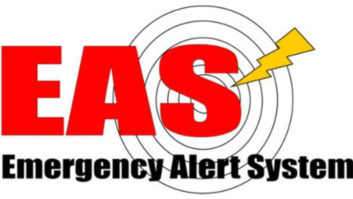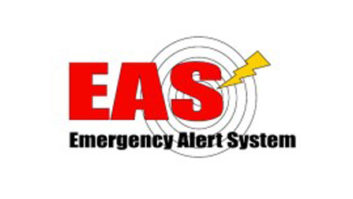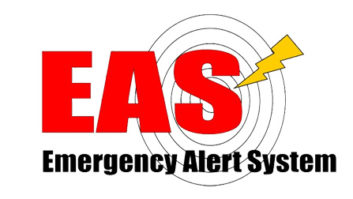The FCC has spent the last six months unpacking what it learned from the most recent nationwide test of the Emergency Alert System. Now the issues and complications EAS participants experienced have come into focus.
The FCC has detailed its findings on how well the system worked in a new report released earlier this week.
Inadequate audio quality, out of date equipment software and alerting source issues were the most common problems reported by radio stations, TV stations and cable providers following the October 2018 test, according to the government agency charged with oversight of EAS.
The data was collected from filings by EAS test participants to the EAS Test Reporting System (ETRS) and prepared by the FCC’s Public Safety and Homeland Security Bureau (PSHSB).
The EAS test, administered by FEMA and sent on Oct. 3, 2018, was transmitted in English and Spanish and included a text message along with audio. It immediately followed the first ever nationwide Wireless Emergency Alerts (WEA), which was delivered to mobile devices.
The new analysis shows FEMA’S Integrated Public Alert and Warning System continues to deliver high-quality, effective, and accessible EAS alerts via its internet feed, according to the report.
EAS participants’ results were comparable to 2017 performance levels, according to the FCC, with continued improvement in several areas. Specifically:
- A majority (58.7%) received the test alert first via IPAWS, as compared to 41.9% in 2017;
- A similar rate of both successfully receiving and retransmitting the test alert (95.7% receipt, as compared to 95.8% in 2017; 92.1% retransmission, as compared to 91.9% in 2017);
- An increase in receiving and retransmitting the test alert in both English and Spanish (rates up from 2017 by 388% for receiving the alert and by 350% for retransmitting the alert);
- A decline in audio issues reported as an explanation for complications in receipt and
retransmission (down to 68 explanations, from 1056 explanations provided in 2017);
- Slightly higher rates of configuring their equipment to monitor IPAWS (96.8%, as compared to 96.7% in 2017).
Radio-specific data shows of the 13,435 radio broadcasters participating in the nationwide EAS test, 96.4% of them successfully received the National Periodic Test with 96.4% successfully retransmitting it.
The FCC’s report details specifics on the performance issues of EAS participants. There were 504 test participants reporting issues involving antenna, reception and hardware issues. Some 160 participants provided detailed explanations of EAS equipment configuration issues, according to the report, most of those dealing with retransmission of the test.
The FCC noted 215 test participants who provided detailed explanations of complications related to the failure to update EAS equipment software. The impact of failing to install recent software updates varied: “Some test participants reported that failure to install a software update prevented their equipment from receiving the alert, while most reporting software issues with their equipment were unable to successfully retransmit the alert. A majority of test participants that reported needing updates also reported that they have since made the necessary updates,” according to the latest report.
Audio issues were fewer than during the 2017 test, the analysis reveals, with 68 participants explaining audio quality complications. Another 276 noted audio difficulties but failed to provide further explanation.
“Many test participants reported audio quality issues that included background noise, static, distortion, echoing, low volume, and slow audio playback. Some test participants attributed their issues to a weak signal from the over-the-air sources they were monitoring or EAS equipment malfunction,” the report states.
The FCC report concludes with a series of “next steps” to help address the remaining areas for improvement:
- Provide guidance, such as through Public Notices and direct follow-up with EAS participants, to improve the accuracy of reporting in ETRS and to address commonly reported complications, such as the importance of software updates and proper equipment configuration, and following State EAS Plan monitoring assignments.
- Promote accessibility through continued outreach to EAS participants, particularly those
referenced in filings with the Public Safety Support Center and other commission records, to ensure future coordination of alert crawl with closed captioning, and to ensure future EAS messages are provided with appropriate crawl speed for readability, high-contrast text and background colors, and adequate audio quality. Issue a Public Notice to remind EAS participants about the relevant rules and best practices to provide accessible EAS alerts. Explore mechanisms to improve feedback solicitation and collection for both the public and in ETRS regarding accessibility issues for non-English speakers and people with disabilities.
- Reach out to low-power broadcasters through a variety of means, including directed mailings and a webinar, to improve their participation in the nationwide EAS test.
FEMA hasn’t set the next nationwide test date of the infrastructure designed to allow a president to speak to the country in case of a national emergency.
[Subscribe to our newsletter and get it delivered right to your inbox.]







